Pyer Moss Revolutionizes French Couture
Welcome to the New Age Renaissance
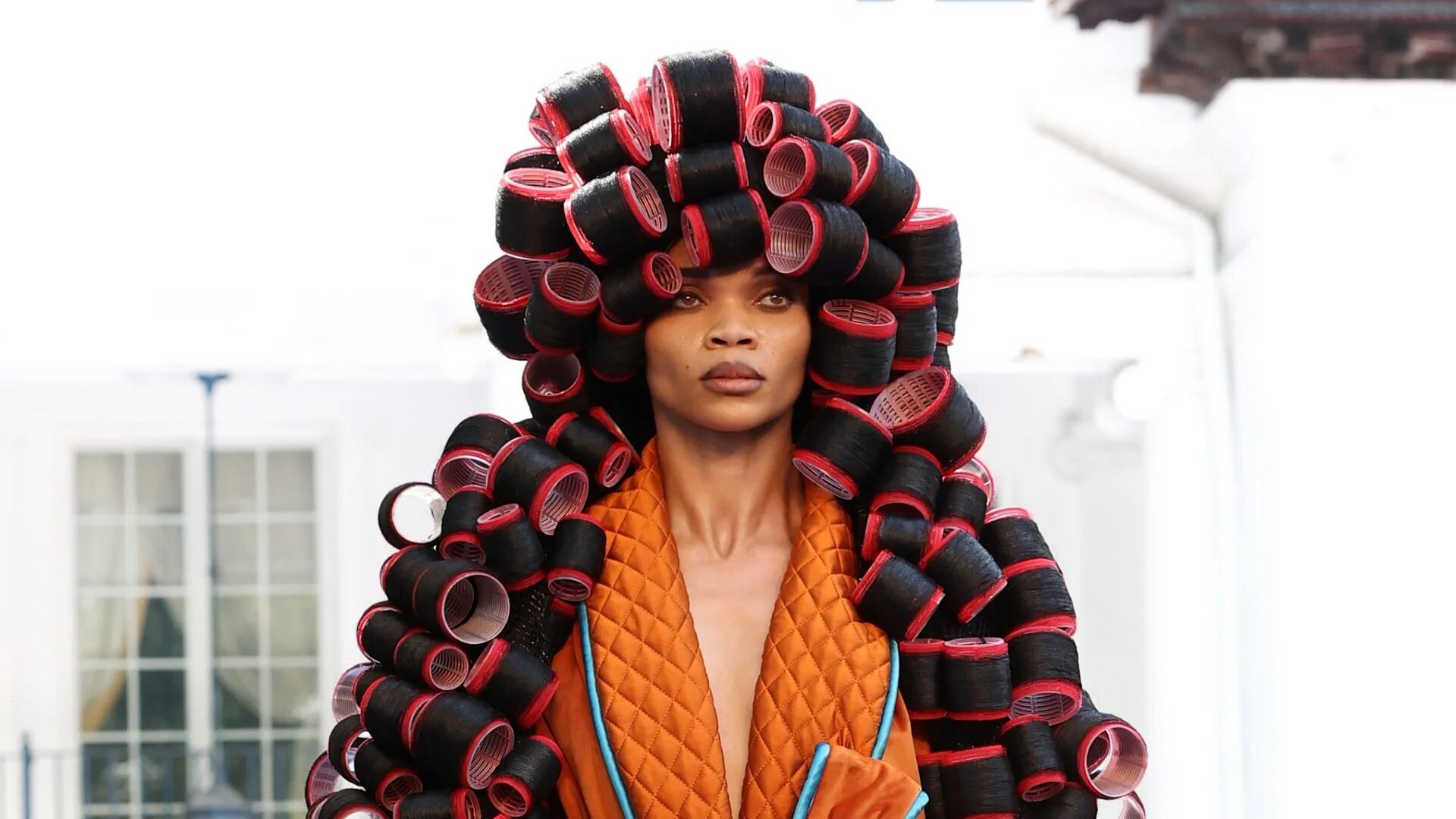
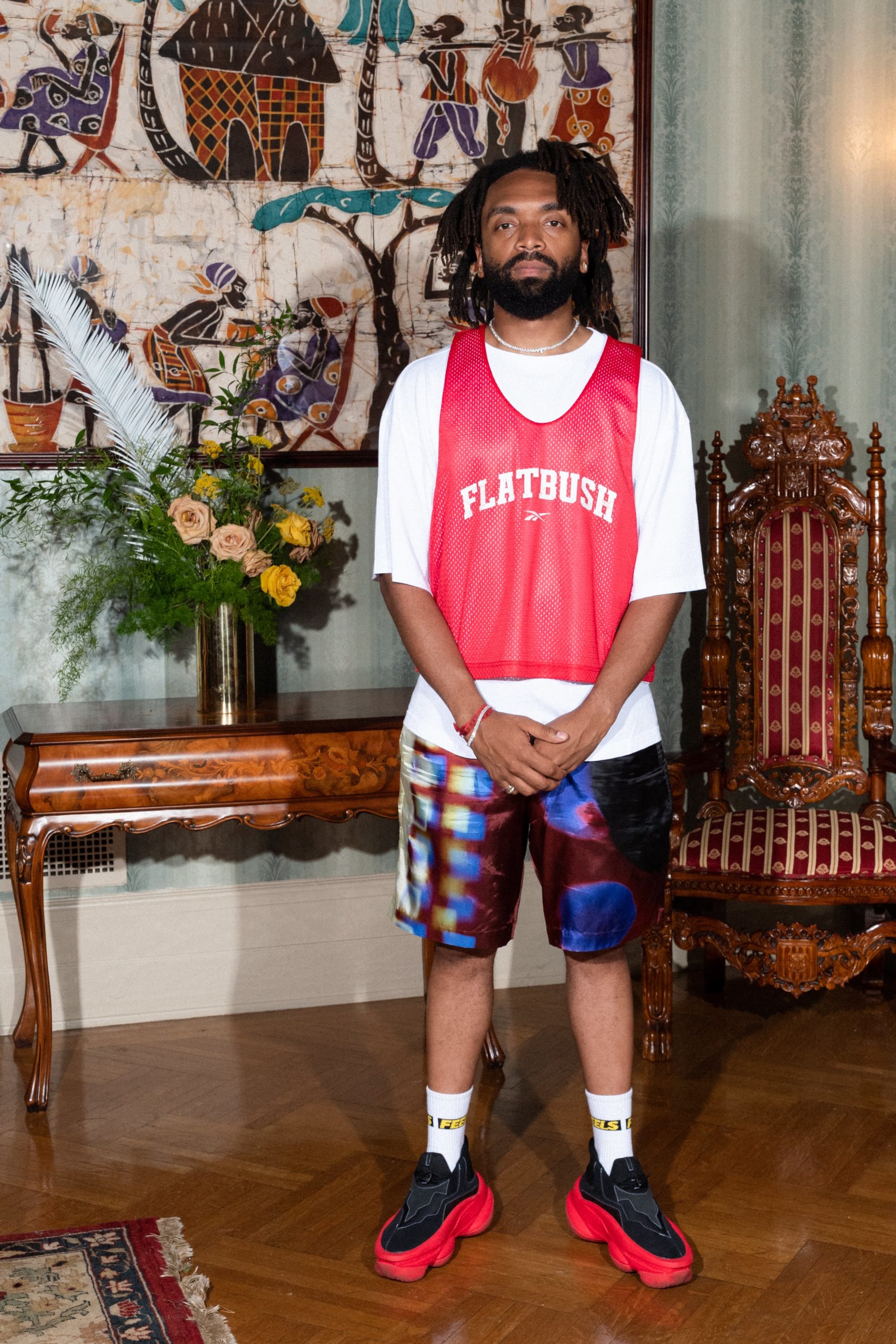
It was a day of many firsts.
The first ever Black-American, Kerby Jean-Raymond, was invited to show at Paris Couture Fashion Week. As groundbreaking as that is, no one could have ever imagined how impactful Pyer Moss’s first couture show would be.
Taking place 3,605 miles away from Paris, (where the rest of the couture shows are shown), at Villa Lewaro, the Palladian estate built in Irvington, N.Y., by Madam C.J. Walker, a child of slaves who became a beauty mogul and the first female self-made millionaire in the United States is where Jean-Raymond was destined to present his show.
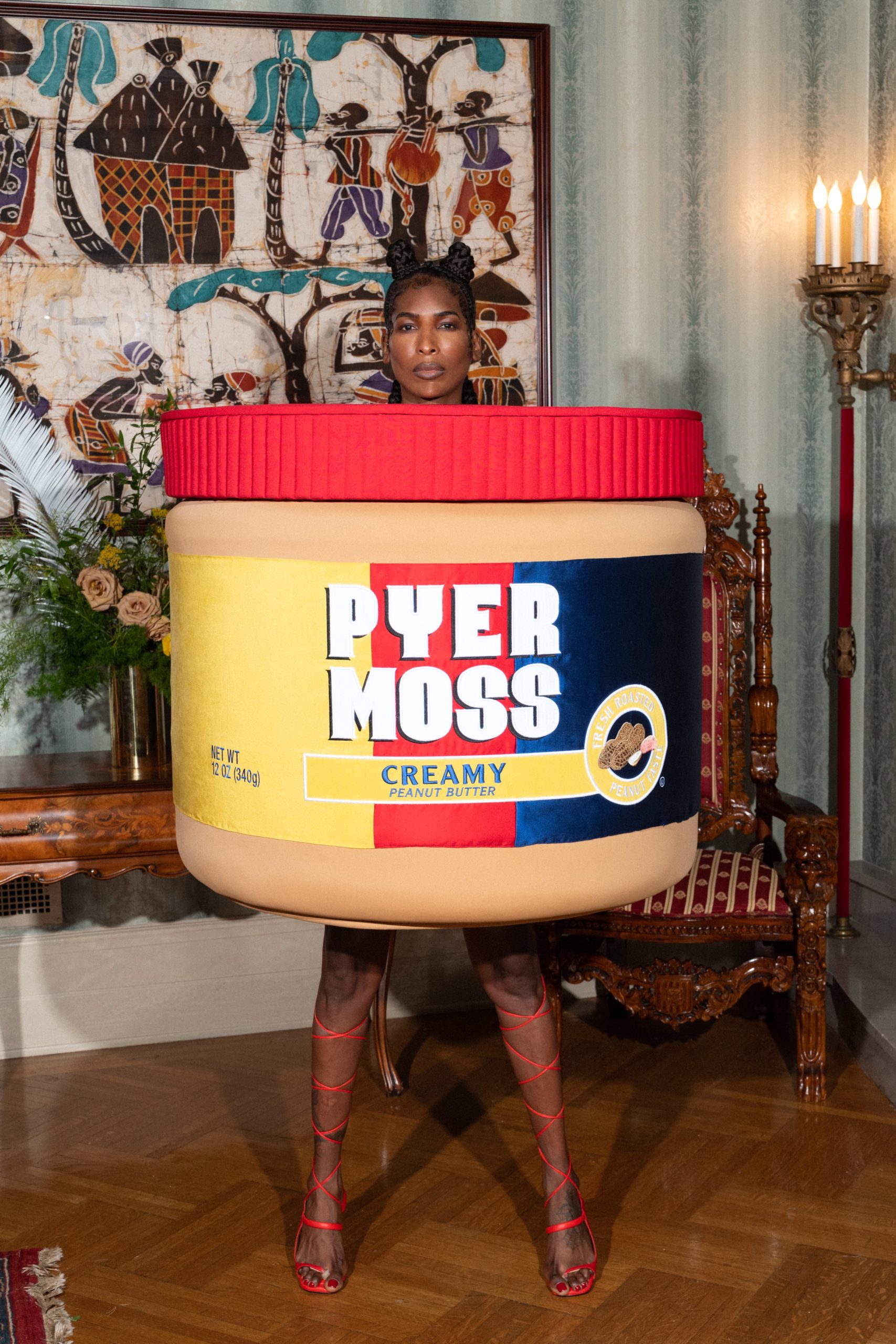
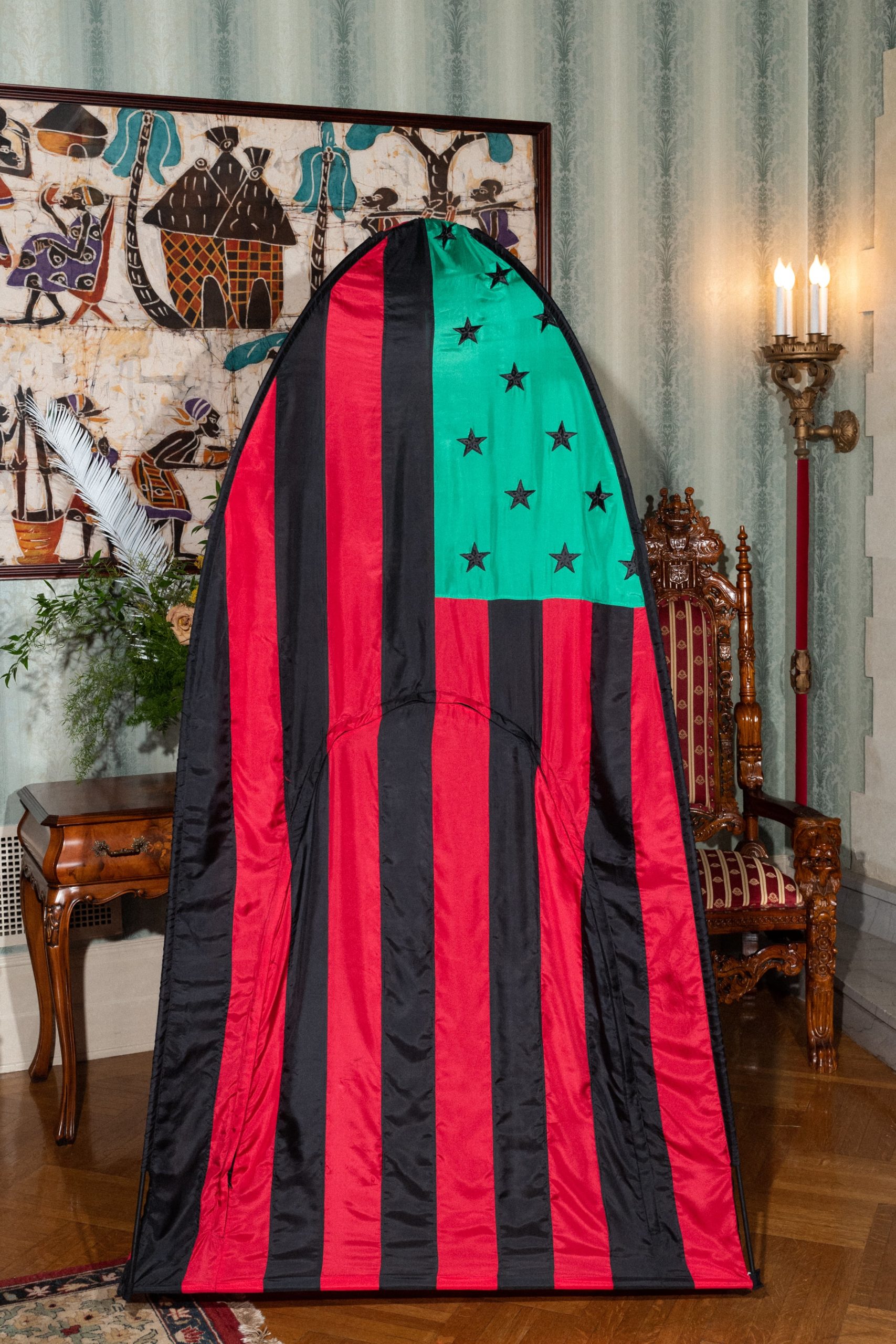
“Couture shows attract such a specialized audience,” Mr. Jean-Raymond said beforehand. “Sultans, queens, the wealthy elite. We don’t have a Black answer to that.”
The originally scheduled Pyer Moss debut was Thursday, but the aftereffects of Hurricane Elsa made Jean-Raymond make the decision to push the show to Saturday. The Pyer Moss team recreated the entire show, including the cookout and pre-rolled joints.
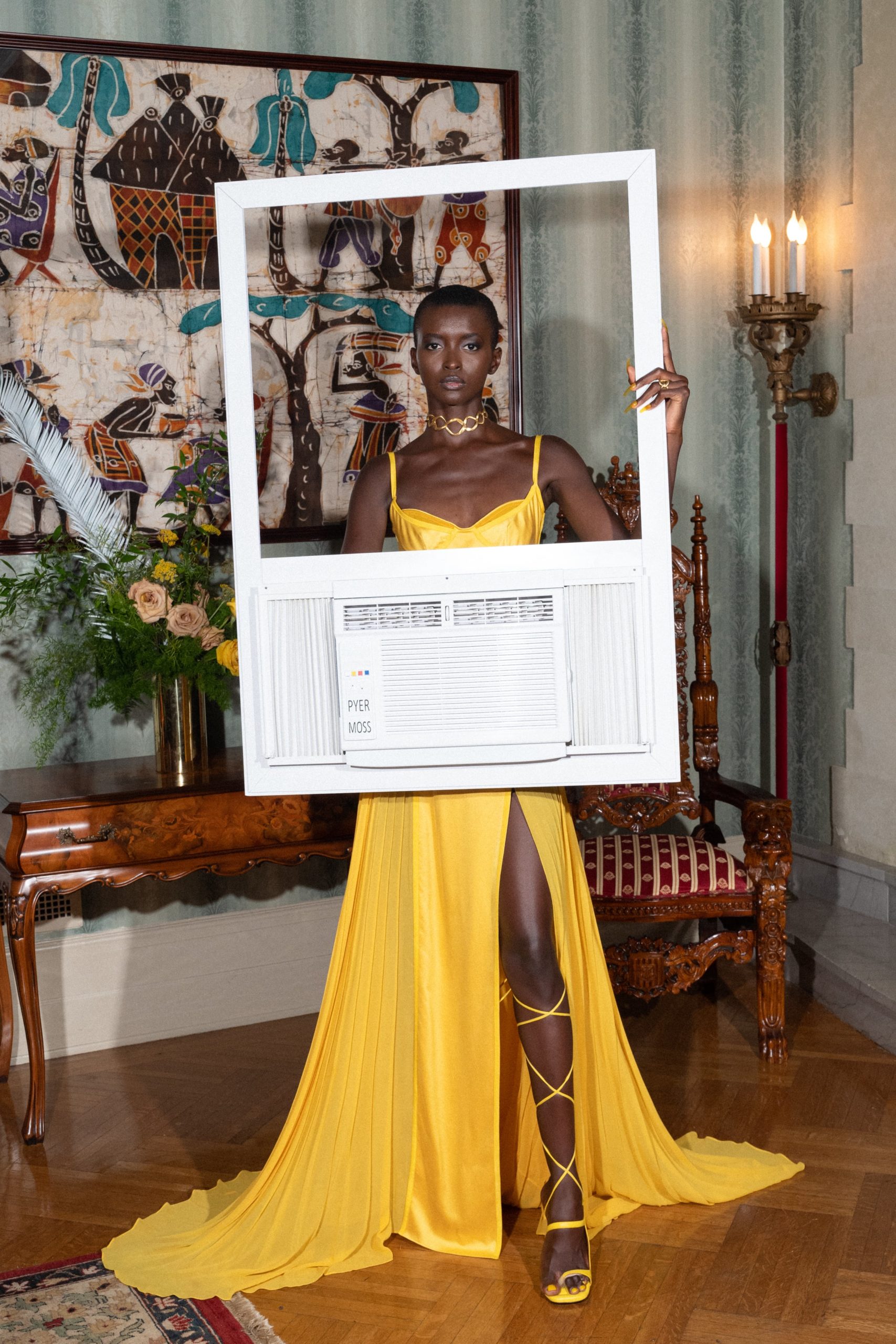
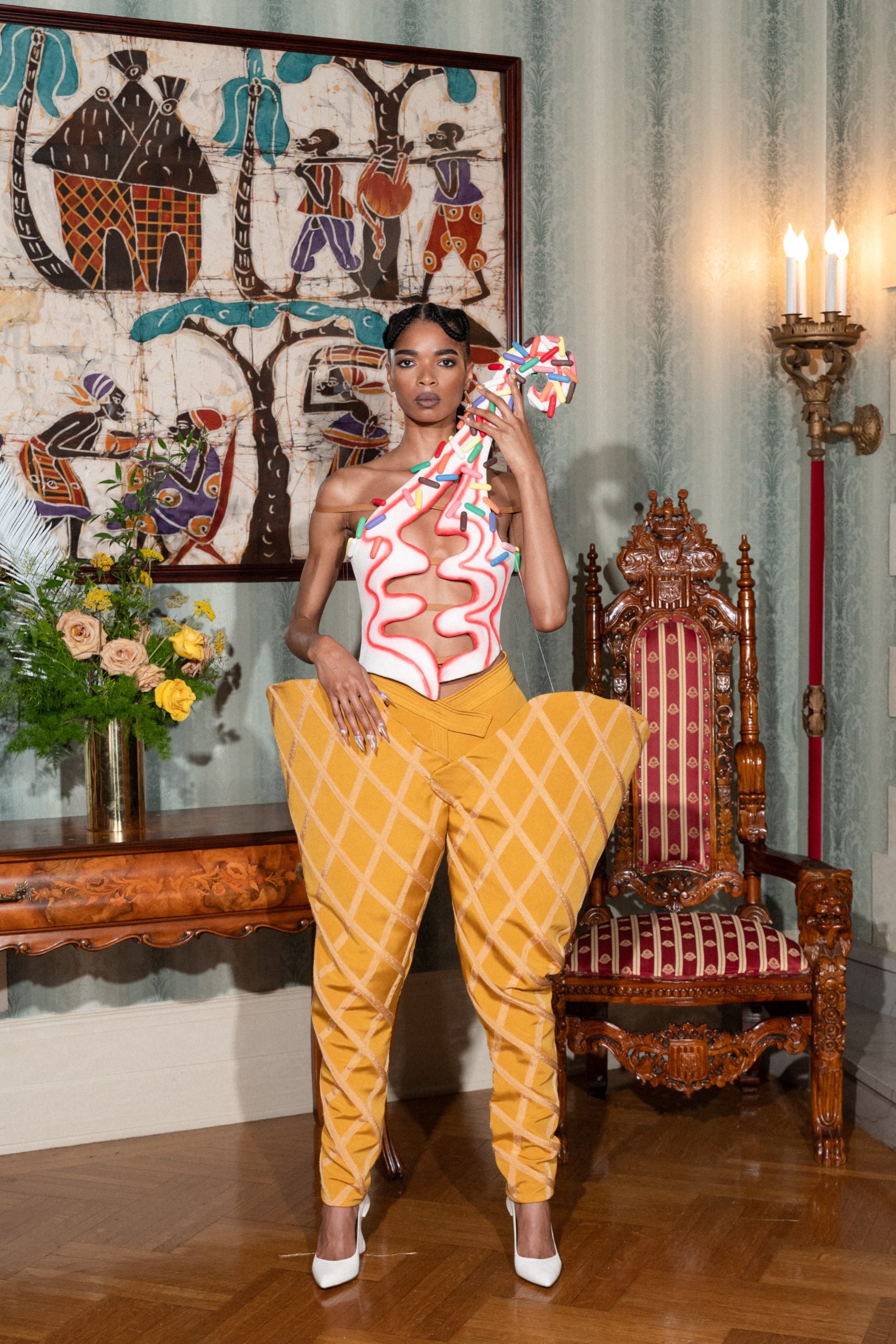
The Haitian-American designer had the intention to create tributes to black-owned inventions. The execution of the collection was not to only present beautiful garments with camp kitschy elements, but to tell a story that highlights black innovation.
“These are inventions by Black people and I wanted to reintroduce them to Black people, reverse the erasure that may exist—and to troll a little bit, too,” Jean-Raymond explained after the show.
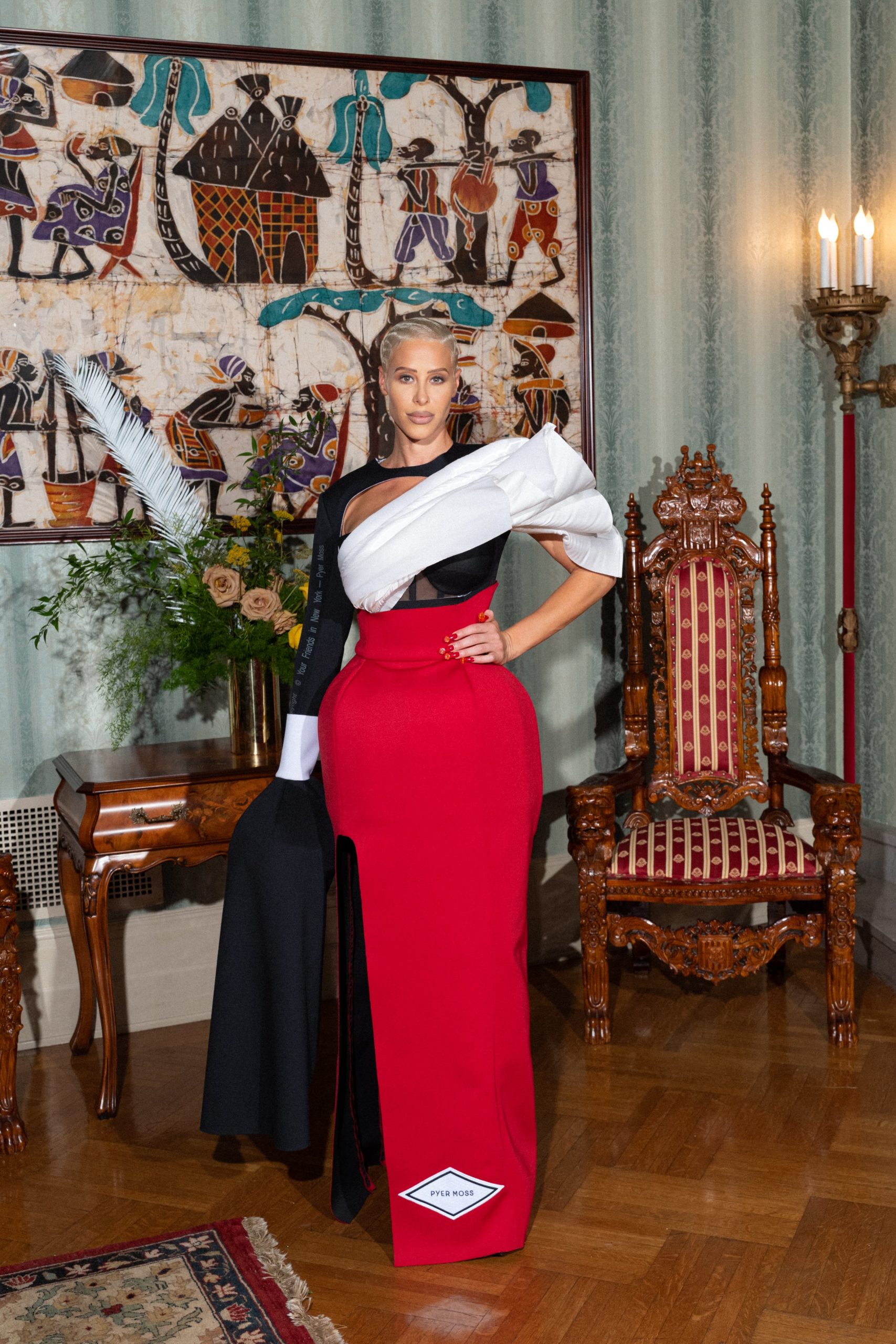
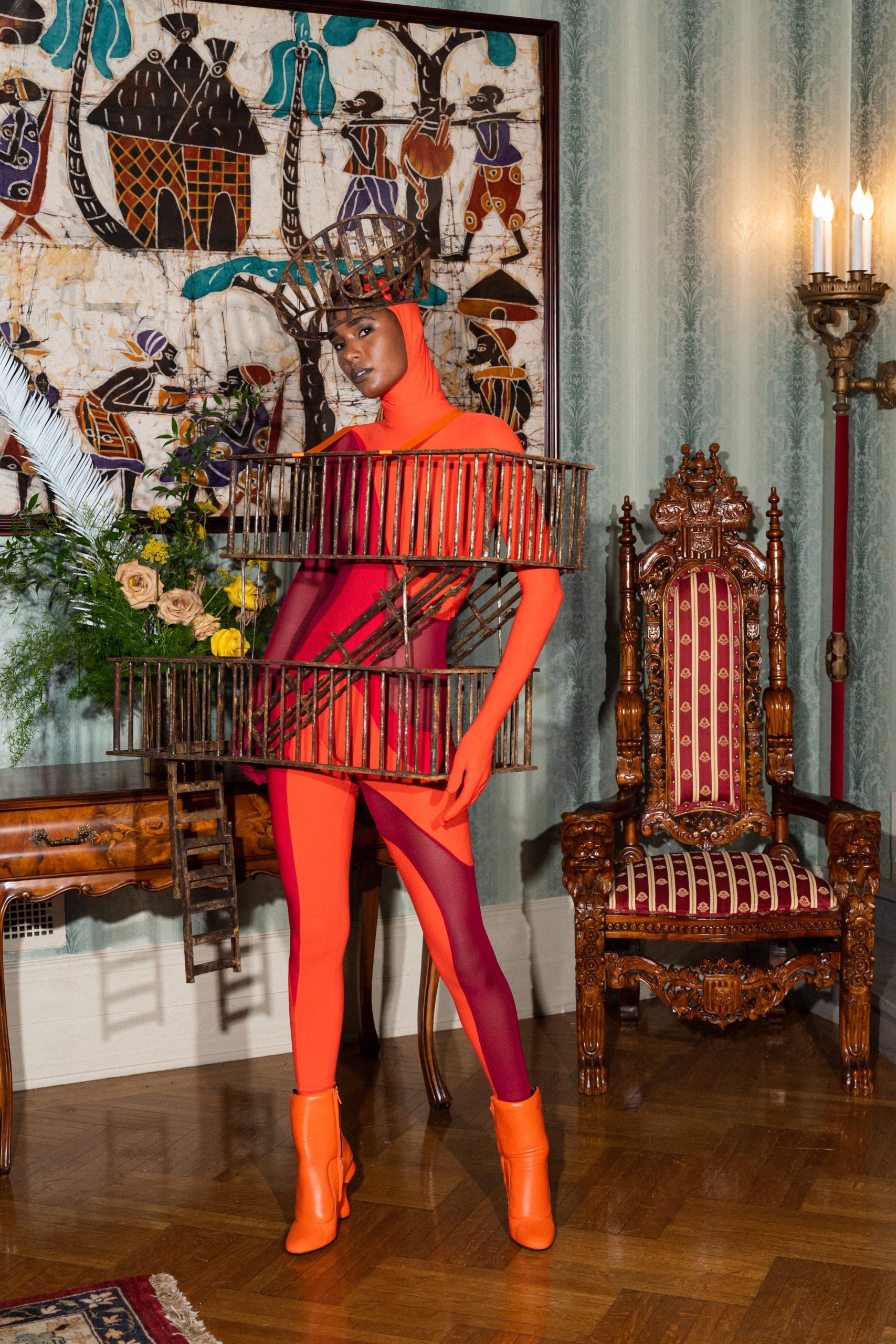
Jean-Raymond spent about $1.2 million, he said, to make this collection happen. He was willing to risk the fact that “this show could ruin me.” And that is why he called the show “Wat u Iz.”
After visiting the Library of Congress, the designer wanted to create a couture collection with each look paying homage to the inventions listed that were attributed to a Black individual (or culture: chess, the subtext of a harlequin patterned pantsuit, which originated in Africa).
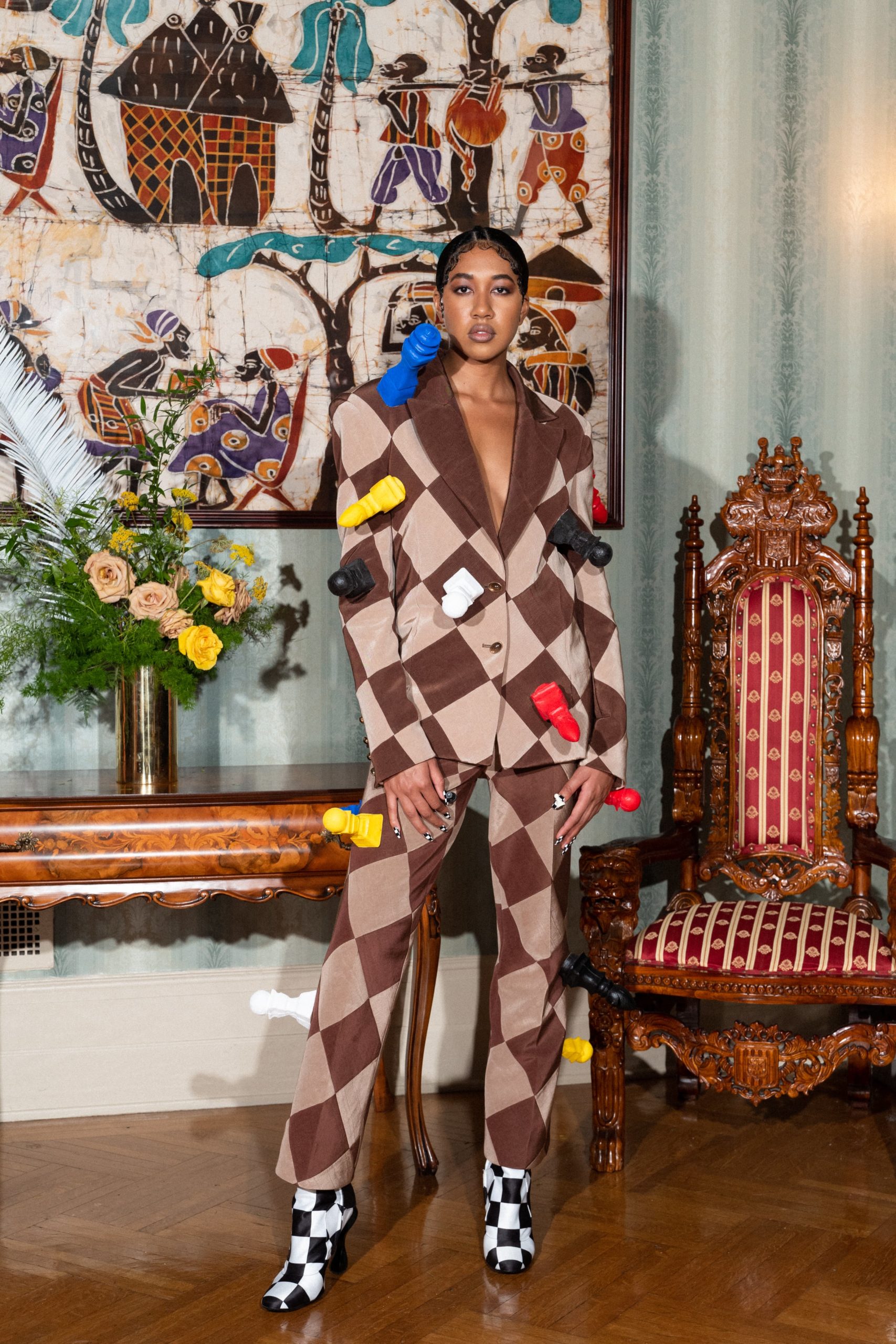
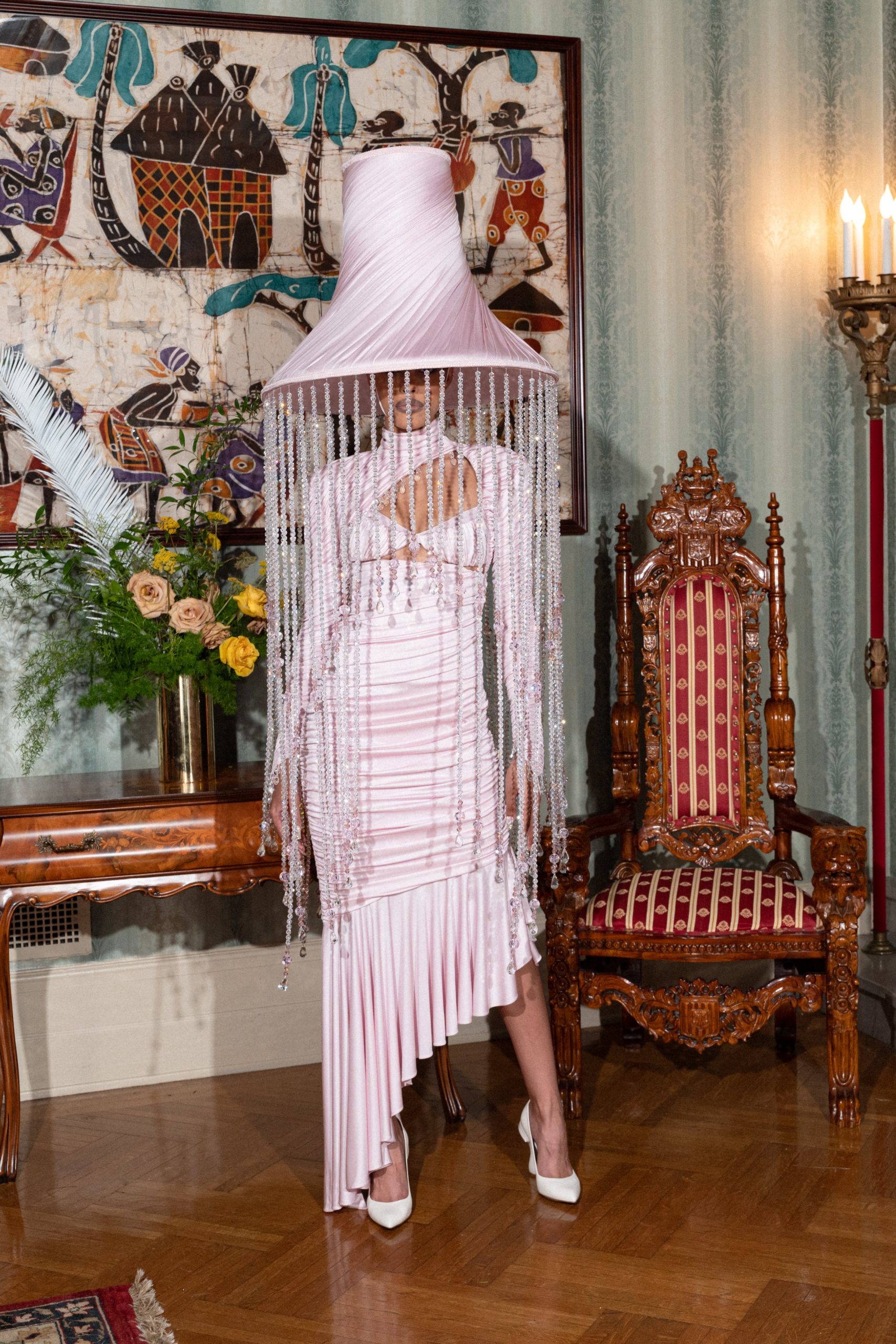
An organza dress with a fridge for a front, complete with a message using magnets saying “but who invented black trauma”, a cape made out of thousands of hot rollers that took two weeks to create, and Elaine Brown, the only female leader of the Black Panthers, who made a grand appearance opening the show preaching the history of the party and demanding, “Where do we go from here?”
An army of male dancers wearing tailored white suits performed in the center of the stage as the models walked around them to the beat of the live orchestra playing in the background. Jean-Raymond put together a couture runway show like no one has ever seen before.
And to complete the show, 22Gz, an artist from East Flatbush, Brooklyn, where Jean-Raymond grew up, had taken the runway and started to rap amid the dancers. The costume-like wardrobe included a black tiered gown with thigh-high slits, a gas mask leather bodice and a giant leather hand worn clenching onto the model, featuring a yellow mop between the fingers.
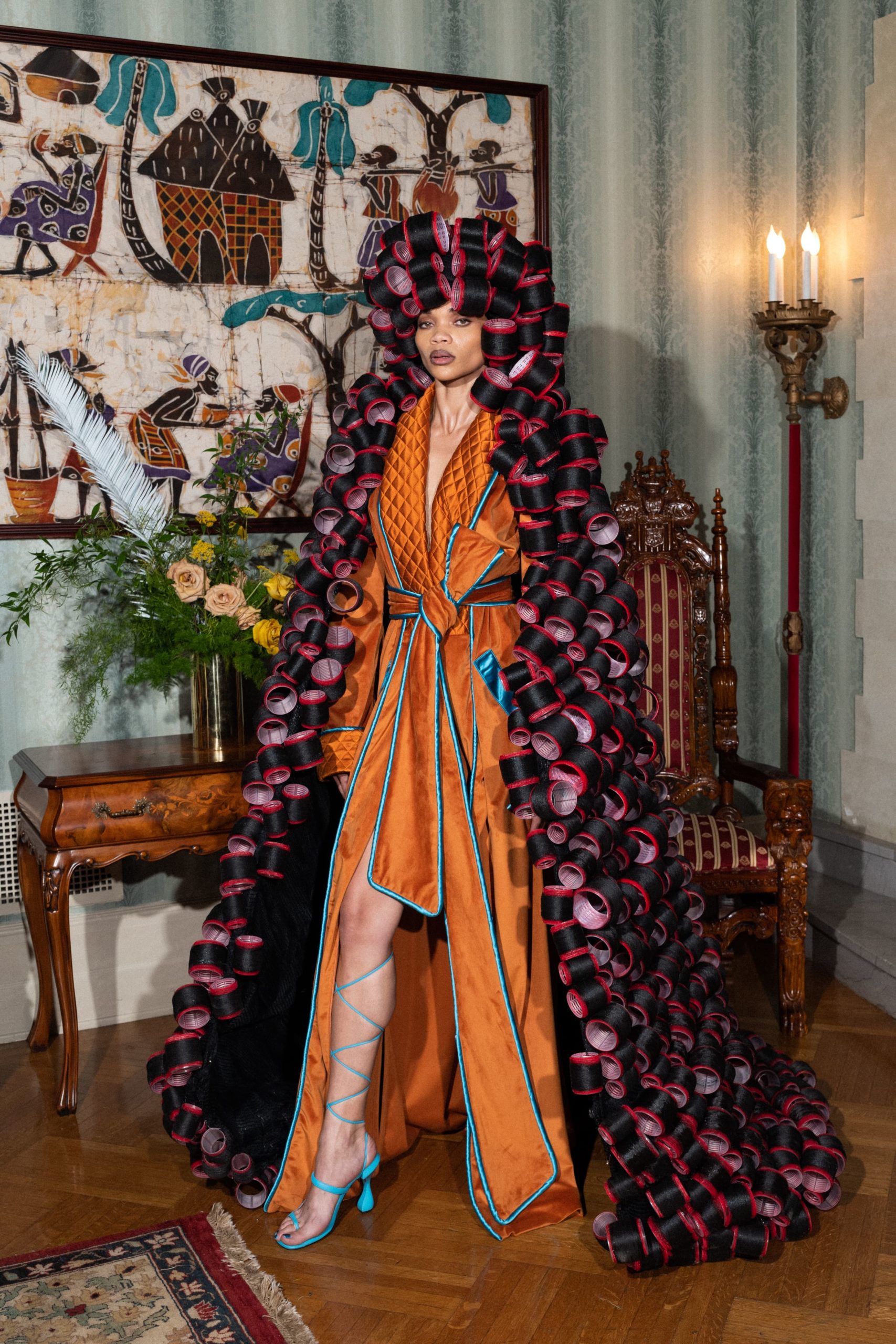
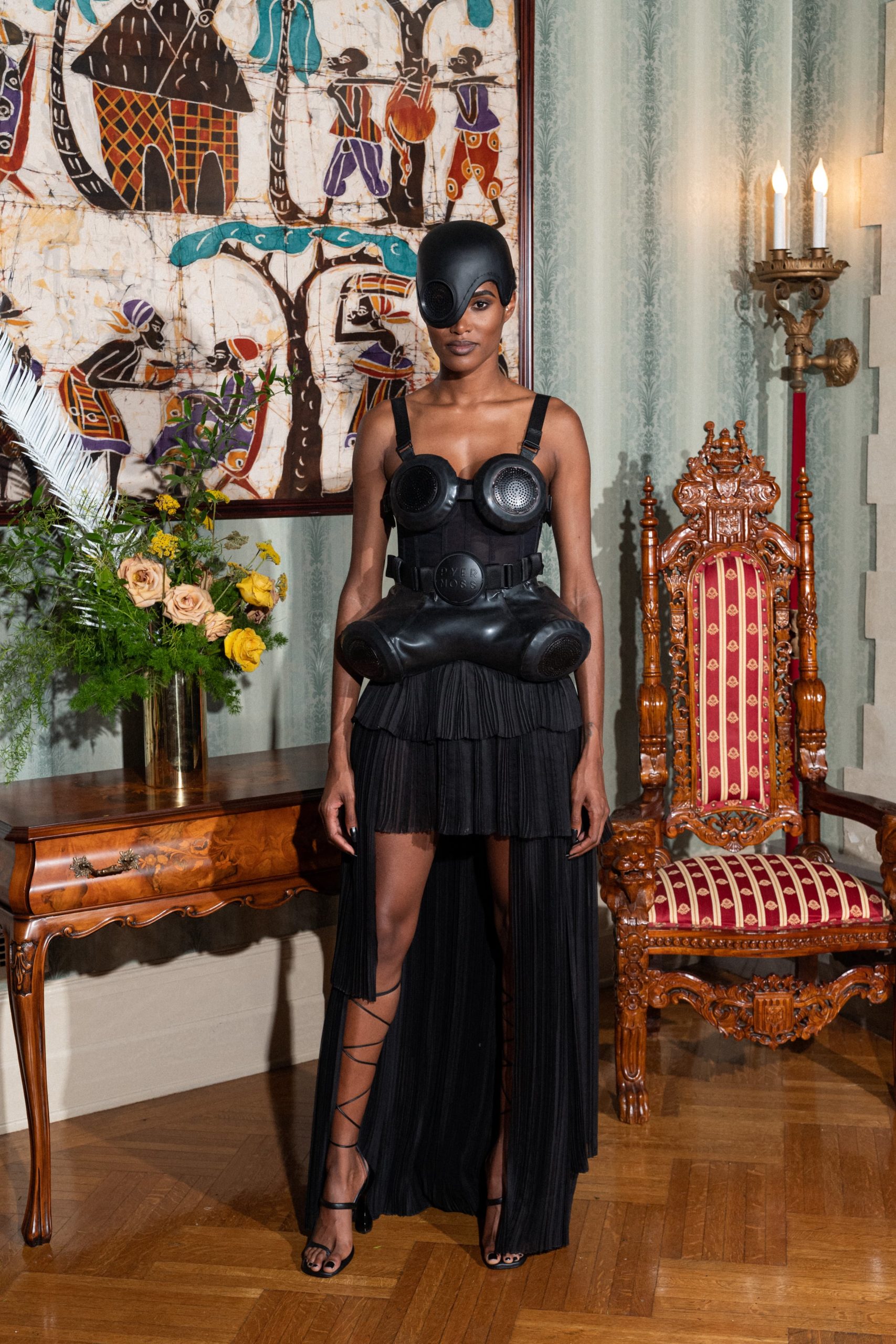
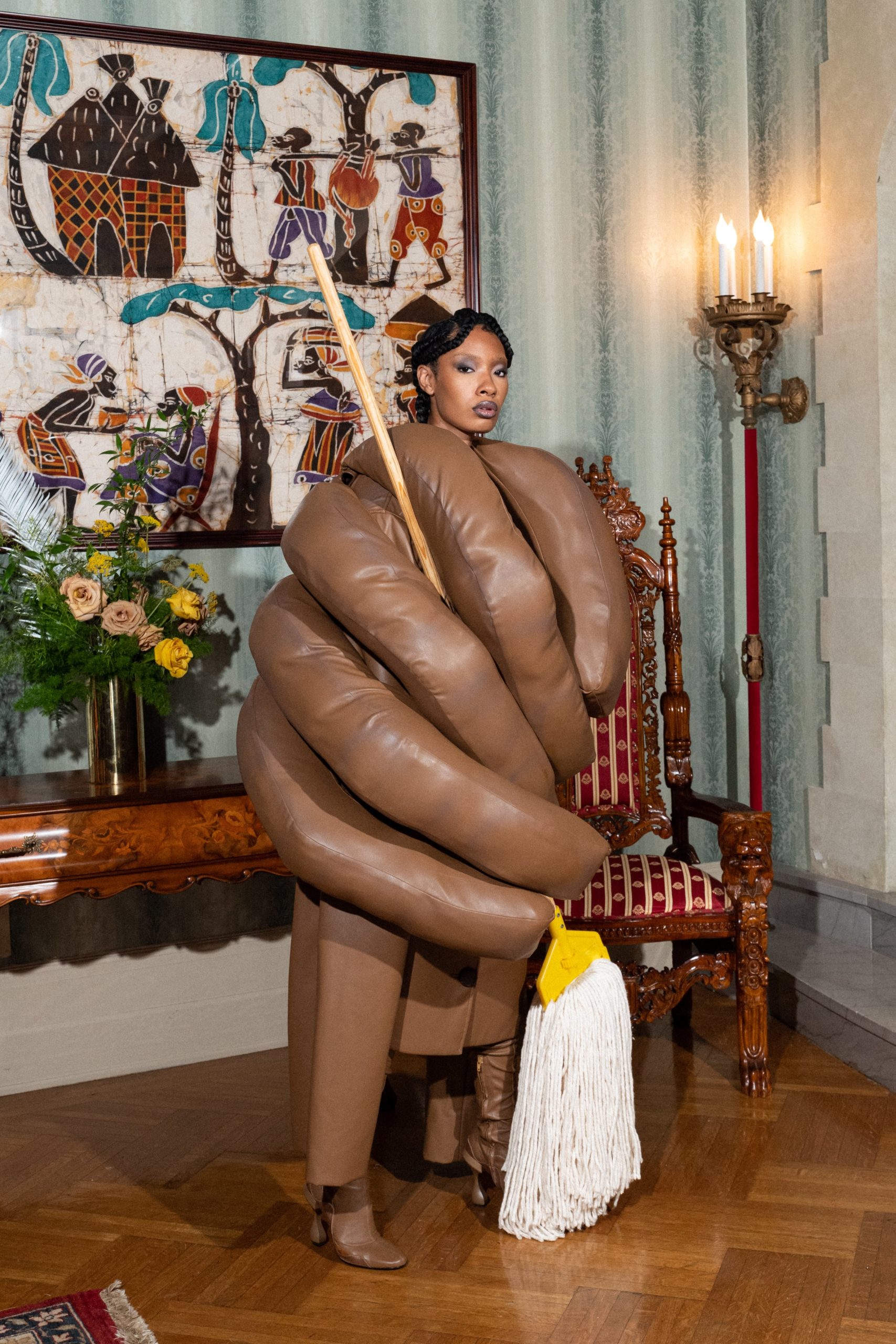
Not only is he breaking barriers through his clothing, but he also started a group called “Through Your Friends in New York”, to support designers who have been marginalized or exploited in the past because of the color of their skin, their sexuality or their gender.
The New York based designer doesn’t have a definitive atelier, but he put together teams he met in Los Angeles after working on the show “Insecure,” which included costume designers and the petites mains of Pixar and Imagination studios. The runway pieces had to be shipped across the country on trucks that normally are used to transport race cars.
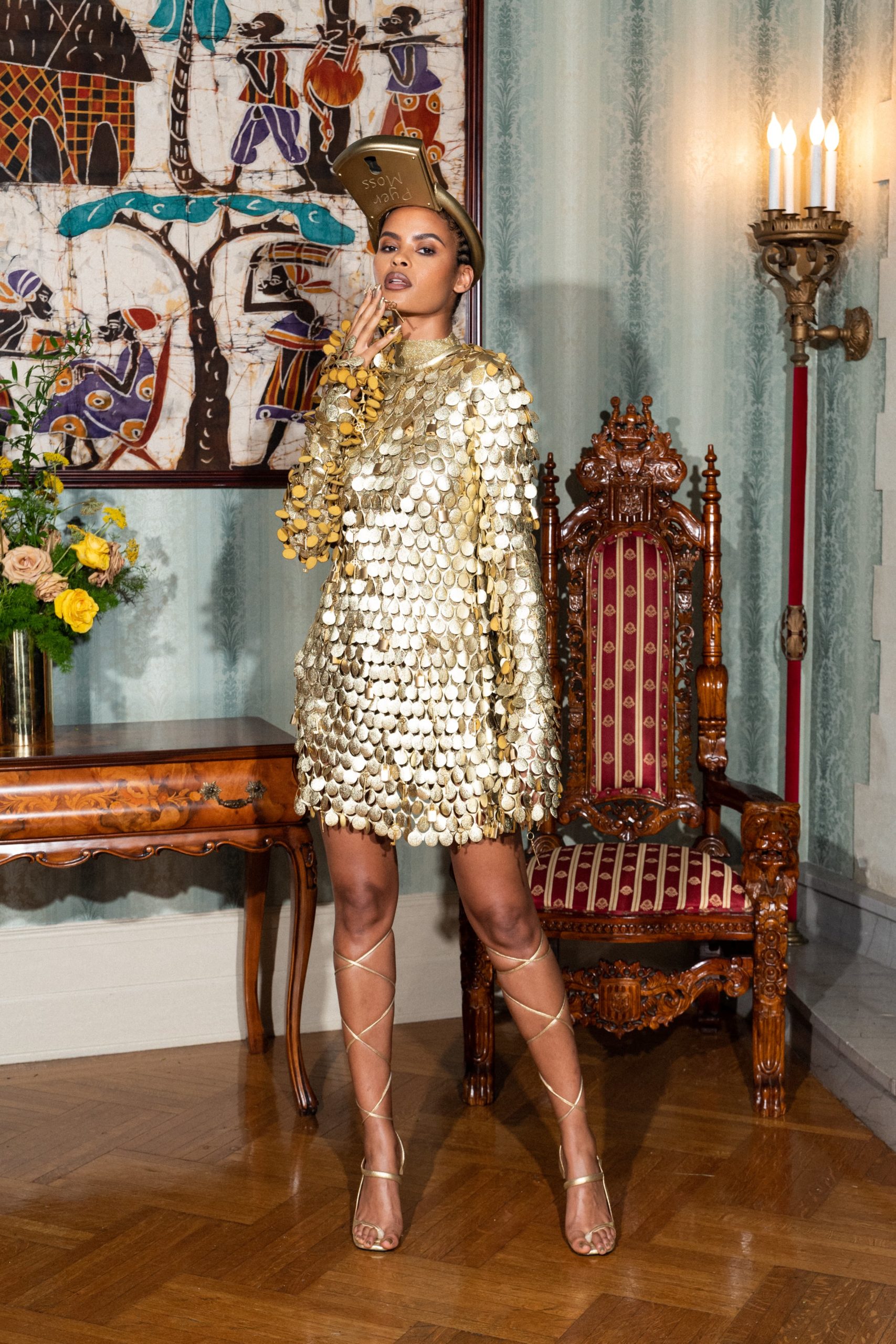
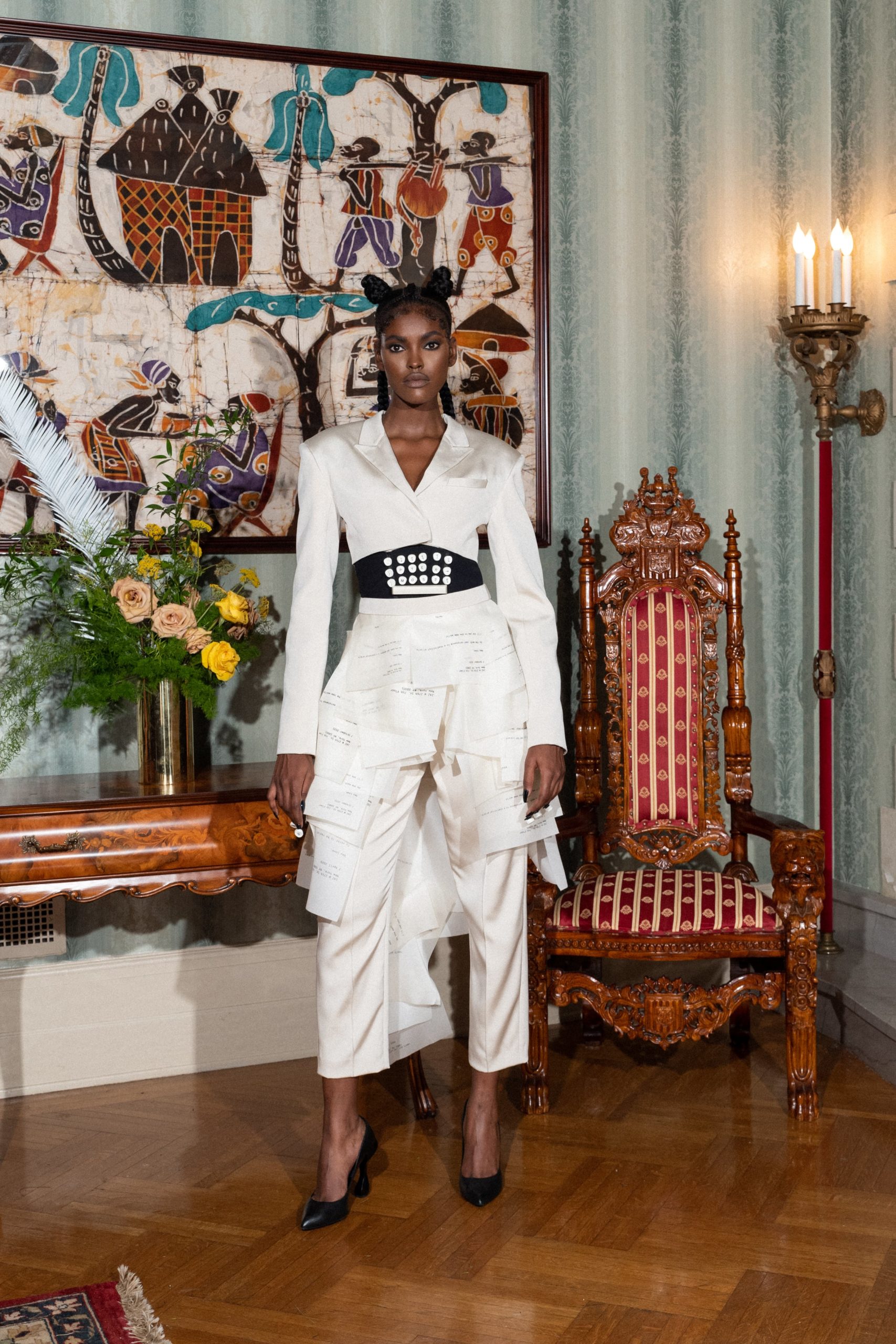
The clothes are far from “ready to wear” and some might even question the lack of actual “wearable” garments, which is fair, but this show was meant to be more than just a runway to showcase a couture collection. The message intricately woven within the clothing is what the Pyer Moss couture show was all about; “reverse the ratio of Black people’s contribution to the culture to refuel the Black imagination.” This is a celebration of the new age renaissance.
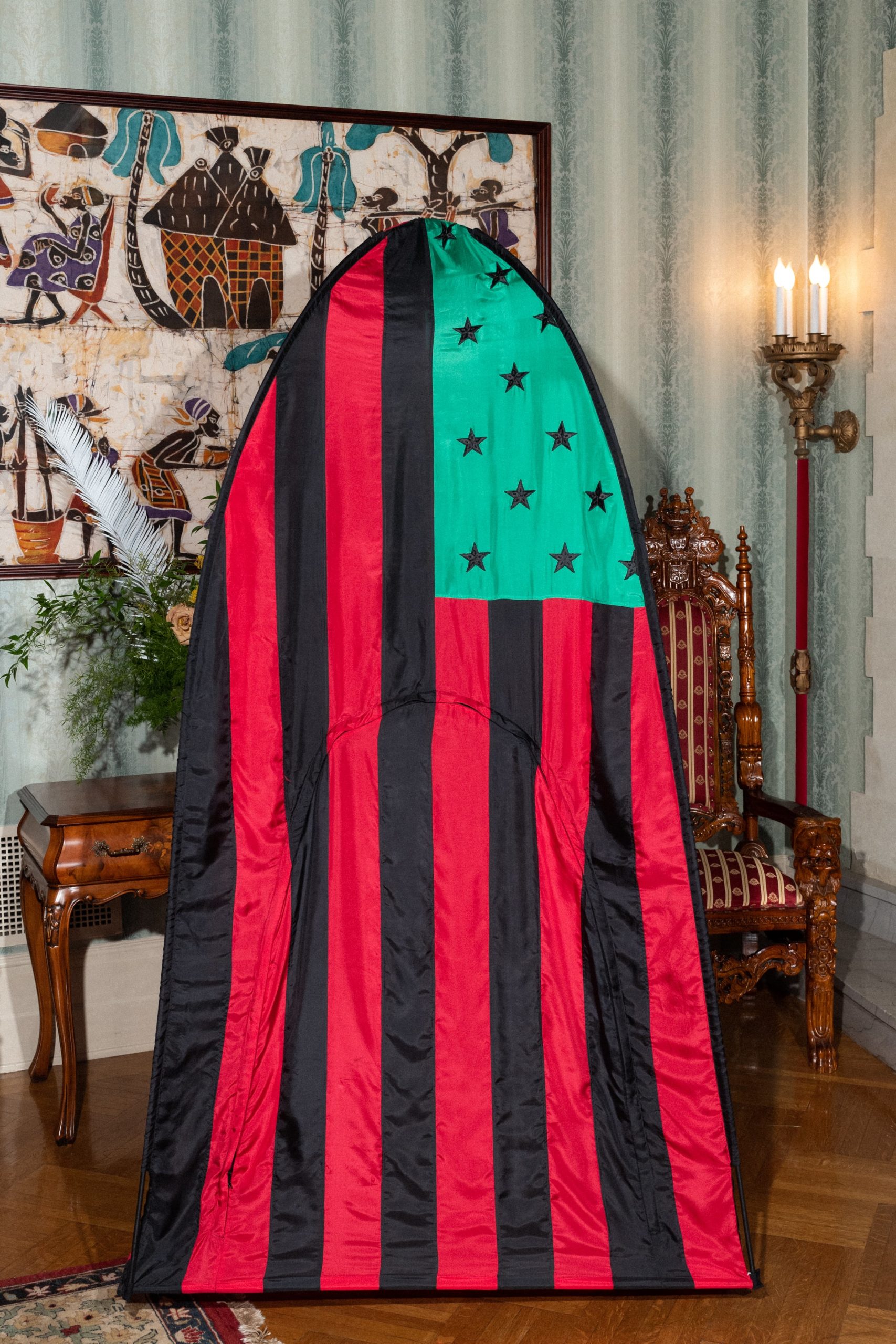
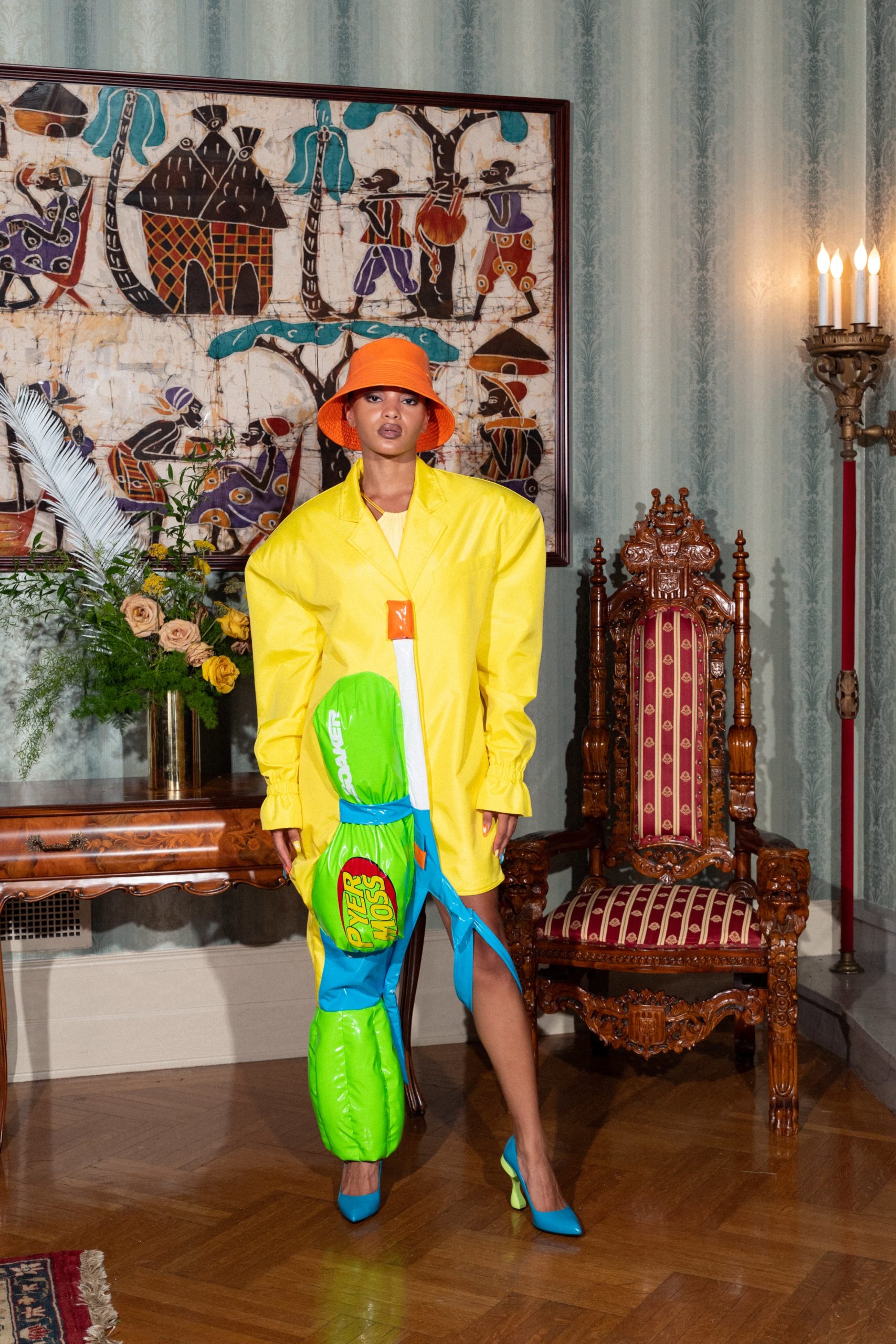
Receiving a standing ovation attested to the powerful role that Jean-Raymond plays in an industry that has a reputation of failing Black creatives. Reclaiming his history via creating a couture collection as the first Black-American for Paris fashion week has had an immense impact on the culture and for upcoming Black-American designers.
Jean-Raymond didn’t imitate what the great couture designers of the past nor the present have done. He solely has created his own lane in the realm of couture and has reimagined the Black role in the fashion industry forever.
Pyer Moss Couture 1 is now exhibited at the mansion, but if you can’t make it too see it in person watch the legendary show below:
Discover More
